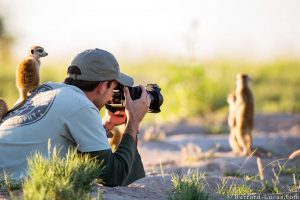Photographing is a great form of art and can relieve stress. Or even looking at the works of others, you can learn to choose unique vantage points and creative techniques to capture images on “film” like no one has ever seen them, if you enjoy the challenge of taking good photographs. It is true that a photograph can convey so much more than mere words.
Choose how much of your subject you would like to view in your photo. The perfect photo will seem like a tiny window focused in on select details about your subject. Don’t focus on too many different things. If you are wanting to show an overview of something, shoot a group of photos that can show the same scene from different vantage points.
If you watch other photographers, you will learn so much. If you look at other photographers’ work, you can learn new strategies for capturing a scene.
Choose only the best photos to showcase or display. Avoid showing too many photos, numerous photos containing the same subject. Showing the same type of photo repeatedly gets old fast. Keep things unique by trying out different types of shots.
And the tips just keep on coming! Take the time to learn the ins and outs of shutter speed. There are S, P and Mand A settings on your camera. Using the “P” setting will put your camera into program mode. This setting is your automatic one. The shutter and aperture speed are automatically set up for your use. Select the “P” mode when you’re not really sure what you’ll be shooting.
When embarking on a journey, keep your camera handy from the very beginning. Don’t limit yourself to the actual location, but look for unique and interesting things as soon as you begin your journey. Record your travels. You can, for example, find many potentially interesting subjects to shoot at the airport.
Having your batteries always charged helps you avoid missing any great shots. When you use the LCD on your camera or the flash, your camera drains power quickly. If not fully charged, you may miss out on some great shots. Another excellent suggestion is to always carry spare batteries with you to ensure you don’t miss a potentially incredible shot.
Snap some shots of your travel souvenirs. Place the object in its native environment or in the local shop where it was purchased, and photograph it this way. Your souvenirs will have more meaning and provide future enjoyment for you if you can create a story about each one.
 The shutter, aperture and ISO speed are an important part of photos so make sure you know the combination that works best for you. Together, these features interact to determine the photograph’s exposure levels. Underexposed or overexposed pictures should be avoided, unless that’s the shot you are going for. Experimentation with these features and how they work together will lead you to the perfect combination.
The shutter, aperture and ISO speed are an important part of photos so make sure you know the combination that works best for you. Together, these features interact to determine the photograph’s exposure levels. Underexposed or overexposed pictures should be avoided, unless that’s the shot you are going for. Experimentation with these features and how they work together will lead you to the perfect combination.
When your perfect shot is in view, stay still and hold your breath when you push the shutter. When you move quickly, even if the movement is minute, it will interrupt the shot’s ruin and clarity a shot. Take care that you are neither breathing nor moving, before you take that amazing picture.
If they are not familiar with you, take the time to make anyone who models for you comfortable, and this is especially true. Many individuals can be suspicious of a photographer’s motives. Be polite, talk to them for a bit, then ask to take their photo. Let them know it is an art form and not because you want to invade their privacy.
Although not everyone enjoys taking photos, everyone enjoys admiring them. When you involve yourself in taking photos, you will be able to create special memories. Many people praise photography as a meaningful, gratifying hobby. Taking photos is also a good way to de-stress and forget about the troubles of the day.